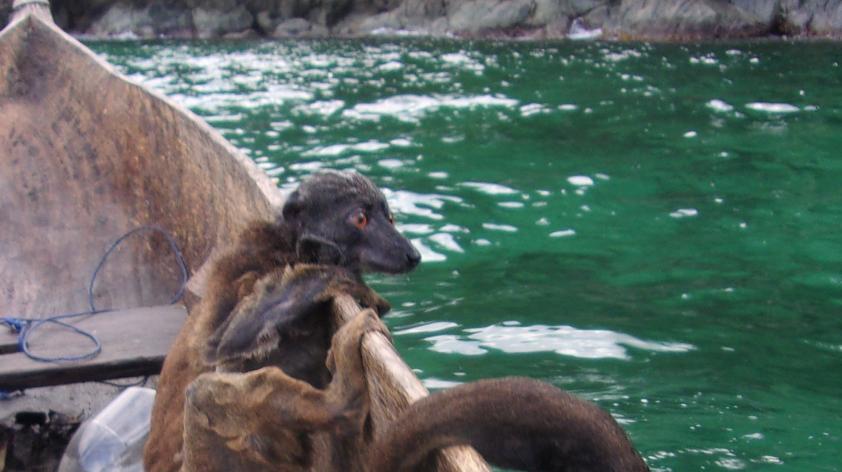
Sink or swim? Conservation in northeast Madagascar
Last year, we began working in the Masoala National Park in northeast Madagascar, the island nation’s largest protected forest. The Masoala National Park encompasses most of the peninsula for which it is named, and has a total area of 240,520 ha of the most inaccessible and largest contiguous tracts of forests habitat left in Madagascar. For much of its western border, the National Park runs along the coast of the peninsula, with lush tropical vegetation seemingly growing right out of the turquoise waters of the Indian Ocean.
Despite the idyllic setting, this area is remote and difficult to access, thus the national park receives relatively little tourism compared to other sites.
Similar to other protected areas in Madagascar, Masoala National Park faces myriad threats. The local population is heavily dependent on agriculture, and many of these surrounding communities hunt wildlife, including lemurs, because of food insecurity and high malnutrition. Given the critical situation of the lemurs, habitat, and local human population, this region is in desperate need of strong conservation actions.
In November 2017, we commenced on a collaboration with Portland State University to help conserve the lemurs of this region. Since then we have maintained a constant presence in the Masoala, operating a field research camp with local employees monitoring lemur populations. Capacity building opportunities such as this provide not only an immediate economic benefit to local communities, but also benefits the wildlife, in that the locals learn to value animals more if they are thriving in the forest, rather than on the dinner table.
A couple months ago, in September, one of our local guides (Jacqueria) was traveling between two villages on the peninsula in his pirogue, also known as a dugout canoe. Hugging close to the coast due to the large ocean swells, he spotted something unusual approximately 30 meters from the shore. From the distance, it appeared to be a dark, cat-sized animal splashing in the waves, struggling to stay afloat. As he approached for a better look, he realized that it was a lemur! A female white-fronted brown lemur Eulemur albifrons to be exact!
Never before had he—or possibly anyone else—seen a lemur in the ocean.
Despite the occasional observations of some bamboo lemurs in the wild swimming short distances (under a few meters), swimming is not an activity that lemurs are known to partake in. As it were, Jacqueria did not observe how this lemur ended up in the ocean, and because it was desperately struggling, he rowed beside the animal and lifted it up into his canoe with his oar. Taking a moment to catch its breath, the lemur quickly settled down at the front of the canoe as Jacqueria calmly paddled back towards shore. Once on land, the lemur jumped to the nearest tree trunk, and eventually returned into the forest after taking some time to reorient itself.
This is, in and of itself, an incredible account of a highly unusual situation within a region that is faced with a multitude of socioeconomic issues. Had Jacqueria not been employed at our research camp, the chances of the lemur surviving would be highly unlikely. After all, a lemur struggling in the ocean is basically a free meal that could have fed his family for a couple days.
It is hopeful that increasing economic opportunities through long-term conservation research efforts or tourism may create a shift in local perceptions of wildlife.













